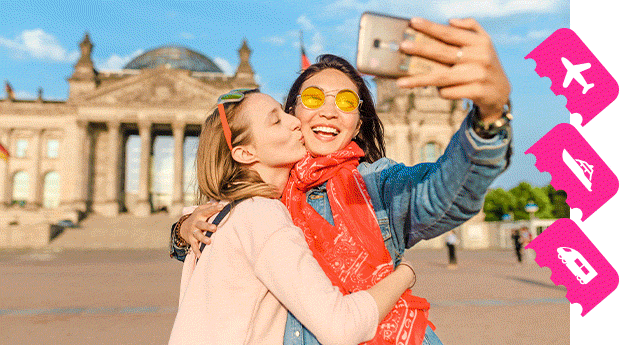If Croatia were a drag queen, she’d be on RuPaul’s Drag Race All Stars 6. Some people have heard of her, others forgot she exists and everyone is about to fall in love with her. Okay, so she’s Kylie Sonique Love. (In the spirit of this metaphor, Jujubee is Greece.)
Like Kylie, Croatia does it all, does it well and does it without breaking a sweat. And she’s beautiful, too: Her rocky coastline and historic cities seduced the makers of Game of Thrones, a lot of which was filmed here. But Game of Thrones wasn’t a travel documentary and failed to capture the country’s sparkling beaches, which are among the world’s best, or its people and culture, which strike a sexy mix of Slavic and Mediterranean.
In fact, outside of Croatia’s hornbeam forests, alpine lakes and jagged coastline of more than 1,200 islands, the country’s main draw is Croatians. Their modest dress might fool you, but they inject joy and passion into everything they do, whether they’re bringing in the day’s catch, chatting over coffee—a favourite Croatian pastime—or belting out folk music at a dive bar. They’re laid-back in many areas of their lives and have slowly but surely embraced their queer comrades. Though same-sex marriage was banned in Croatia in 2013, same-sex partnerships, including adoption rights, have been legal since 2014. There’s even a gay member of Parliament now, Domagoj Hajduković, who came out in 2020 and became Croatia’s Chairperson of the European Affairs Committee shortly after. The country is certainly heading in the right direction.
Here’s a quick introduction to what first-time visitors need to see and do in Croatia.
Hello to Hvar
Greek islands traditionally get all the love, but Croatia has its own queer island playground. Hvar can be reached by ferry or catamaran ride from the coastal city of Split, the country’s second-largest city. Many LGBTQ2S+ people will discover it as part of a queer cruise, but it also works as a destination in and of itself. There are galleries, seafood restaurants and carved Venetian-style façades on every corner. Guesthouse Aurora (Ul. Jelke Bucic 6, Hvar), with its airy terraces and sparsely-decorated rooms, provides contemporary comfort in the centre of town. At Hula Hula Hvar Beach Club (Petrićevo šetalište 10, Hvar), try Višnja, a surprisingly sweet liqueur crafted from sour cherries. Mizarola (Vinka Pribojevića, 21450, Hvar) serves a classic trattoria look, with its weathered white brick walls and delicious pizza.
Love is love is a museum
Charming Dubrovnik, which has a metro population of just over 61,000, lures visitors with its winding seaside walkways and walled inner city—pure historic bliss. But it’s worth getting out of the city centre to visit The Love Stories Museum (Ul. od Tabakarije 2, Dubrovnik). Sequestered in a labyrinthian section of town, the museum, founded in 2018, celebrates love in all its forms: queer, straight, confounding and consuming. Here, visitors can marvel at artifacts that previous visitors left behind to commemorate their romances. Then, on the top floor, they can scribble anonymous love letters that will stick to the wall for eternity (hopefully).
If that’s too sweet for your tastes, visitors who like things a bit more bitter can drop by the Museum of Broken Relationships in Zagreb (Ćirilometodska ul. 2, Zagreb). Like its more romantic cousin, it boasts dozens of donated artifacts, each accompanied by a story. But here, each story is about a relationship gone wrong. Cute?
Marry the night in Zagreb
The capital city of Zagreb, which has a metropolitan population of more than a million people, has only one explicitly queer space within its city limits—but that’s one more than
most cities in Croatia. That haven is the smoky and lively Hotpot (Petrinjska ul. 31, Zagreb), which blasts EDM and campy Croatian pop onto its rowdy dance floor. Judging solely by its discreet exterior, you’d never imagine the debauchery that takes place here. That said, it also caters to the entirety of the LGBTQ+ rainbow, welcoming everyone from twunks to go-go girls to drag queens.
The capital is also home to queer-friendly establishments like Klub Močvara (Trnjanska struga 34, Zagreb), an abandoned riverside factory that packs as many as 600 alternative music lovers into its foreboding concrete walls every weekend.
Visitors looking for a more intimate experience can squeeze themselves into the tiny red-brick Caffe Bar Kolaž (Amruševa ul., Zagreb). What it lacks in size, it makes up for in style: the seating area, with its bronze and backlit panels, resembles a giant honeycomb.
Explore inside the city walls of Split, Croatia
The Old Town of Split (a city with a metro population of about 350,000) may be the only place in the world where you can buy both sex toys and €2 cappuccinos in an ancient Roman palace. Situated within the tall, sturdy walls of the Roman emperor Diocletian’s former residence, built between 295 and 305, the Old Town is a must-visit site. As you stroll through the hypnotic maze of cobblestone alleyways, you’ll find just as many top-notch restaurants as you will dive bars. For those in search of fine dining, Zrno Soli (Uvala Baluni 8, Split) serves solid seafood on a breezy terrace overlooking the marina.
After a bite, Kružića Street should be on any serious nightlife lover’s list. The crowded area, with its obstacle course of drinkers, fosters an inclusive environment that attracts revellers from all over the gender spectrum. No matter your background, you’ll have good company as you lean against walls anchored in centuries of Dalmatian, Roman and Austro-Hungarian history.
Speaking of Romans, you may even bump into one of those guys who pose in Roman garb for tourists outside the city walls. (A few, like their plastic spears at their sides, swing both ways.)
If you haven’t become enamoured with Croatia after embarking upon this short tour, then you need to spend a bit more time. After chatting with the locals for hours over coffee, you’ll be ready to stay here the rest of your life.


